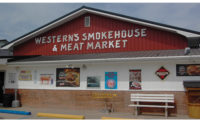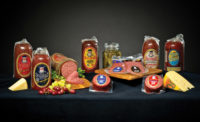A smokehouse can help a processor turn raw product into smoked meat magic. Hot dogs, hams, jerky, deli meat, and bacon are just a few of the items that become premium products, thanks to a little smoke and a little heat. Whether a processor has one or two houses or a dozen or more, they tend to be the workhorses of the plant floor. Unless they’re down for maintenance or cleaning, smokehouses don’t stay idle for very long in most plants.
Depending on how adaptable the equipment is, an experienced processor can configure a smokehouse to perform other operations or improve its cooking efficiency.
“When we think about the use of a smokehouse, we have a box, and you’re trying to apply smoke and heat and change the quality aspects, texture and yield, and transform something that’s raw into something that’s edible and hopefully of high quality in a very uniform and consistent way,” explains Dr. Jeff Sindelar, professor and extension meat specialist at the University of Wisconsin-Madison.
“Outside of that, you also happen to have a big sanitation unit. If the oven has the capacity for steam, you can steam equipment or utensils and help have a robust food safety program,” he adds.
In addition, the smokehouse can produce products far beyond the typical red meat and poultry items. It can smoke fish or cheese, cook vegetables or make baked goods, depending on the level of adaptability in the system. Beyond products for human consumption, pet treats and dog bones can also be smoked in a smokehouse.
Processors can also change the breakpoint in a smokehouse. The breakpoint, Sindelar explains, is where airflow from two different sides of the smokehouse meet.
“Air usually comes down both sides [of the smokehouse], hits the bottom of the oven, turns in, and at the center bottom of the oven collides, which is called the breakpoint. Then it usually comes straight up through the product,” he says.
For products like sausages or hams, which hang on the smokehouse trucks, that airflow may be the most efficient design. However, products like jerky or meat bars lay flat on racks. In those instances, he says, airflow can come down one side of the smokehouse faster than the other. That air current can flow down the side of a smokehouse, across the floor, and up the other side, where it meets the other airflow to create the breakpoint. In that instance, the air will blow horizontally across the products, creating an optimized cooking cycle.
Today’s smokehouses have many adaptations that can benefit processors. The latest models are able to monitor temperatures inside the oven, log that information, and export it into various formats to help processors track food safety, process optimization, and more. To help further improve food safety, Sindelar recommends that processors use pass-through smokehouses, even though that adds to the cost of the equipment and affects the product flow of the facility.
“Out is the era of smokehouses where product comes in and out of the same door, where you have cross-contamination potential. In is today’s cross-directional flow: raw on one side and cooked out the other side,” he says. “To me, it’s really getting to be a food-safety must-have.”





Report Abusive Comment